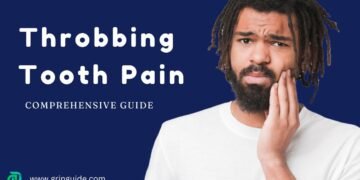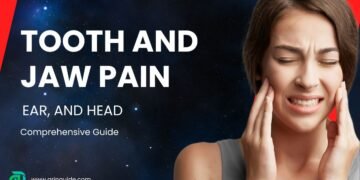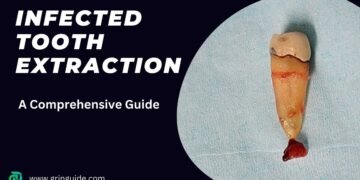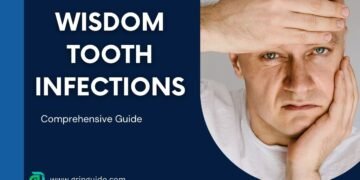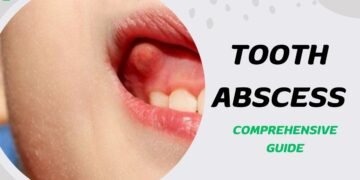Table of Contents
Introduction to Sinus Infections
Sinus infections, medically known as sinusitis, are common ailments affecting millions of people worldwide. These inflammations occur in the sinus cavities, which are hollow spaces within the bones around the nose. When these cavities become inflamed or swollen due to infection, blockage, or an allergic reaction, it leads to sinusitis. The primary causes of sinus infections include viral, bacterial, and fungal infections, as well as prolonged exposure to allergens or pollutants.
The symptoms of sinus infections can vary but often include nasal congestion, facial pain or pressure, headache, fever, and a reduced sense of smell. In some cases, individuals may also experience teeth pain, particularly in the upper jaw, due to the proximity of the sinus cavities to the dental roots. This connection between sinus infections and teeth pain can be particularly distressing, as it may lead to misdiagnosis and ineffective treatments if not properly understood.
Sinus infections can be categorized into four main types: acute, subacute, chronic, and recurrent. Acute sinusitis is the most common and typically lasts up to four weeks, while subacute sinusitis persists for four to twelve weeks. Chronic sinusitis is defined by symptoms that last for more than twelve weeks, often despite medical treatment. Recurrent sinusitis, on the other hand, involves multiple episodes of acute sinusitis occurring within a year.
Sinus infections can significantly impact an individual’s quality of life, leading to missed work or school days and a general feeling of malaise. Understanding the causes and symptoms of sinus infections is crucial for timely and effective treatment, which can help alleviate associated discomforts, including teeth pain. Proper diagnosis and management are essential to prevent the progression of sinusitis and its complications.
The Anatomy of the Sinuses
The human sinuses are a complex network of air-filled cavities located within the bones of the face and skull. They play a crucial role in respiratory health, contributing to the humidification and filtration of the air we breathe. There are four main pairs of sinuses: maxillary, frontal, ethmoid, and sphenoid. Each of these sinuses has distinct locations and functions, yet they are interconnected, which means that an issue in one can affect the others.

The maxillary sinuses, the largest of the four pairs, are situated in the cheekbones. These are often the most affected during a sinus infection, and their proximity to the upper teeth is why sinus-related issues can sometimes lead to teeth pain. The frontal sinuses are located just above the eyes in the forehead region. These sinuses are often linked with headaches when they become inflamed or infected.
The ethmoid sinuses are a collection of small air cells located between the eyes. Due to their close proximity to the nasal cavity, they are frequently involved in sinus infections, contributing to nasal congestion and discomfort. Lastly, the sphenoid sinuses are located deeper within the skull, behind the eyes. Although less commonly affected, infections in the sphenoid sinuses can cause pressure and pain that radiates to the head and neck.
Understanding the anatomy of the sinuses is essential in recognizing how sinus infections can lead to various symptoms, including teeth pain. The interconnected nature of these cavities means that inflammation or infection in one area can easily spread, impacting overall health and causing a range of discomforts. By recognizing the signs of sinus issues and their potential impact on dental health, individuals can seek appropriate medical advice and treatment, ensuring comprehensive care for both sinus and dental health concerns.
How Sinus Infections Cause Teeth Pain
Sinus infections, medically referred to as sinusitis, can often lead to discomfort that extends beyond the nasal passages, manifesting as teeth pain. This phenomenon is primarily due to the anatomical proximity of the maxillary sinuses and the upper teeth. The maxillary sinuses, located just above the upper jaw, are separated from the roots of the upper teeth by a thin layer of bone. When a sinus infection occurs, the resultant inflammation and pressure can impinge upon this delicate area, leading to the sensation of teeth pain.
The underlying mechanism involves the accumulation of mucus and the swelling of sinus tissues, which create an increased pressure within the sinus cavities. This pressure can extend to the dental nerves, specifically the superior alveolar nerves that innervate the upper teeth. As these nerves are compressed by the inflamed sinus tissues, they transmit pain signals to the brain that are often interpreted as originating from the teeth themselves. This type of pain, known as referred pain, can be misleading, making individuals believe they have a dental issue when the root cause is actually a sinus infection.
Additionally, sinus infections can exacerbate this pain by causing secondary infections or inflammations in the surrounding tissues. The buildup of mucus and the subsequent blockage of sinus drainage pathways contribute to a persistent state of pressure and discomfort. This can lead to a cycle of pain and inflammation that further complicates the identification and treatment of the actual source of pain. Understanding this physiological link is crucial for appropriate diagnosis and treatment, ensuring that patients receive the correct interventions for both sinusitis and the accompanying teeth pain.
Symptoms and Signs of Sinus-Related Teeth Pain
Sinus-related teeth pain is often distinct from typical dental issues due to its presentation and accompanying symptoms. One of the primary indicators is a dull ache or throbbing sensation that predominantly affects the upper teeth. This discomfort usually intensifies when chewing or applying pressure to the affected teeth. The pain is often localized to the back teeth, particularly the molars, and can sometimes radiate to other areas, creating a generalized discomfort in the upper jaw.
Another hallmark of sinus-related teeth pain is its correlation with symptoms of a sinus infection. Patients often report experiencing nasal congestion, which can lead to difficulty breathing through the nose, and facial pressure, particularly around the cheeks, eyes, and forehead. This facial pressure is typically exacerbated by bending over or lying down, which can also intensify the teeth pain. Additionally, the presence of a post-nasal drip or a runny nose is common, further indicating an underlying sinus issue rather than a dental problem.
It’s also important to note that sinus-related teeth pain may fluctuate throughout the day. Many individuals find that the pain worsens in the morning due to the accumulation of mucus in the sinuses overnight. As the day progresses and the sinuses begin to drain, the intensity of the pain may decrease.
Distinguishing sinus-related teeth pain from other dental conditions is crucial for appropriate treatment. Unlike typical toothaches that are usually localized to one or two teeth and may be accompanied by visual signs of dental decay or gum issues, sinus-related teeth pain is often more diffuse and linked to the broader symptoms of a sinus infection. Recognizing these patterns can help in identifying the root cause and seeking the appropriate medical or dental intervention.
Diagnosing Sinus Infections and Related Teeth Pain
Diagnosing whether teeth pain is related to a sinus infection requires a comprehensive approach, encompassing a detailed medical history, thorough physical examinations, and advanced imaging studies. The process typically begins with the patient’s medical history. Physicians will inquire about symptoms, their duration, and any previous occurrences of sinus infections or dental issues. This initial step is crucial in establishing a potential link between sinus infection and teeth pain.
Following the medical history, a physical examination is performed. During this examination, the doctor will inspect the nasal passages and sinuses for signs of inflammation or infection. The presence of swelling or redness can be indicative of a sinus infection. Additionally, palpating the sinuses and facial areas may help pinpoint areas of tenderness that correlate with the patient’s teeth pain.
Imaging studies play a pivotal role in the diagnostic process. X-rays or CT scans are often employed to obtain detailed views of the sinuses and surrounding structures. These imaging modalities can reveal blockages, fluid accumulation, or other abnormalities within the sinus cavities that might be contributing to the teeth pain. X-rays, in particular, can help differentiate between dental issues and sinus-related problems by providing clear images of the teeth, roots, and jawbone.
In some cases, a dental consultation may be necessary to rule out other potential causes of teeth pain, such as cavities, gum disease, or abscesses. Dentists can conduct their own set of examinations, including dental X-rays, to identify any dental conditions that might mimic or exacerbate the discomfort caused by a sinus infection.
By combining insights from medical history, physical examinations, imaging studies, and dental evaluations, healthcare providers can accurately diagnose the relationship between sinus infections and teeth pain. This multi-faceted approach ensures that patients receive appropriate treatment, addressing both the sinus infection and any dental concerns that may be contributing to their symptoms.
Treatment Options for Sinus Infections and Teeth Pain Relief
Treating sinus infections and alleviating associated teeth pain requires a multifaceted approach that addresses both the infection and the discomfort it causes.
Medical treatments are often the first line of defense. Antibiotics are commonly prescribed if a bacterial infection is identified, helping to eliminate the pathogens causing the sinusitis. Decongestants can be effective in reducing nasal congestion, thereby easing the pressure on the sinuses and relieving teeth pain. Over-the-counter options like pseudoephedrine or phenylephrine are available, but it’s essential to use them as directed to avoid side effects.
Nasal sprays, both saline and medicated, can also play a crucial role in managing sinus infections. Saline sprays help moisten nasal passages and clear out mucus, while corticosteroid nasal sprays reduce inflammation, making it easier to breathe and alleviating sinus pressure. In some cases, antifungal treatments or allergy medications may be necessary if the sinus infection is linked to fungal growth or allergies.
Home remedies can complement medical treatments and offer additional relief. Steam inhalation is a simple yet effective method to open nasal passages and reduce sinus pressure, which can subsequently reduce teeth pain. Simply inhaling steam from a bowl of hot water or taking a hot shower can provide significant relief. Saline rinses, such as using a neti pot, can also help clear nasal passages and reduce congestion, further easing sinus pressure. Staying well-hydrated is another key aspect of managing sinus infections, as it helps thin mucus and promotes drainage.
Ultimately, addressing the underlying sinus infection is crucial for relieving teeth pain. Ignoring the infection can lead to prolonged discomfort and potential complications. Therefore, a comprehensive treatment plan that combines medical interventions with effective home remedies is essential for both immediate relief and long-term recovery.
Preventing Sinus Infections and Teeth Pain
Preventing sinus infections and the accompanying teeth pain requires a multifaceted approach that focuses on lifestyle changes and timely medical intervention. One of the primary strategies is maintaining good nasal hygiene. Regularly rinsing your nasal passages with saline solutions can help clear out allergens and irritants that may contribute to sinus infections. This simple practice can reduce inflammation and keep your sinuses functioning properly.
Avoiding known allergens is another crucial preventive measure. Allergens such as pollen, dust mites, and pet dander can trigger allergic reactions that may lead to sinus infections. Using air purifiers, washing bedding regularly, and keeping windows closed during high pollen seasons can significantly decrease your exposure to these allergens. Additionally, if you have known food allergies, adhering strictly to your dietary restrictions can prevent allergic responses that might affect your sinuses.
Staying hydrated is essential for maintaining the health of your mucous membranes. Drinking plenty of water helps keep the mucus thin and less likely to block the sinuses. Moreover, using a humidifier, especially during dry seasons or in air-conditioned environments, can add moisture to the air and prevent the nasal passages from becoming dry and irritated, which can lead to infection.
Timely treatment of respiratory infections and allergies is paramount in preventing the progression to sinus infections. Addressing symptoms early with appropriate medications, such as antihistamines for allergies or decongestants for colds, can mitigate the risk of the infection spreading to the sinuses. Consulting with a healthcare provider at the onset of symptoms ensures that you receive the correct treatment and reduces the likelihood of complications, including teeth pain.
Incorporating these preventive strategies into your daily routine can significantly lower the risk of developing sinus infections and the resulting teeth pain. By maintaining good nasal hygiene, avoiding allergens, staying hydrated, using humidifiers, and seeking timely medical treatment, you can protect your sinus health and overall well-being.
When to See a Doctor
Recognizing when to seek professional medical evaluation for sinus infections and associated teeth pain is crucial for effective treatment and prevention of complications. Certain signs and symptoms warrant immediate medical attention. Persistent or severe pain is a significant indicator that an underlying issue requires professional intervention. If the discomfort extends beyond a week without improvement, it is essential to consult a healthcare provider. This prolonged duration suggests that the body is struggling to resolve the infection on its own, necessitating medical assistance.
Additionally, symptoms such as high fever, swelling around the eyes, or severe headache accompanied by teeth pain can signal a more serious infection that extends beyond a simple sinus issue. These symptoms could indicate complications such as an abscess or a spread of infection to other areas, necessitating prompt evaluation and treatment. Ignoring these signs can lead to more severe health problems, including the risk of the infection spreading to the brain or other vital structures.
Chronic or recurrent sinus infections and teeth pain should not be overlooked. Consistent episodes of discomfort can be a sign of an underlying chronic condition that requires long-term management strategies. Conditions such as chronic sinusitis may necessitate a multifaceted treatment approach, including medications, lifestyle modifications, or even surgical interventions in severe cases. Early and consistent medical evaluation helps in formulating an effective treatment plan, preventing the progression of the condition and improving the quality of life.
Ultimately, not ignoring chronic or recurrent issues is vital for preventing potential complications. Professional medical evaluation ensures an accurate diagnosis and appropriate treatment, safeguarding against the risks associated with untreated sinus infections and teeth pain. Early intervention not only mitigates immediate discomfort but also contributes to long-term health and well-being.
FAQs
-
How do you relieve sinus pressure on your teeth?
There are several ways to relieve sinus pressure that affects your teeth. Here are some effective methods:
1. Use a Humidifier: Keeping the air moist can help reduce sinus congestion and alleviate pressure.
2. Stay Hydrated: Drinking plenty of fluids can thin mucus and promote drainage, reducing sinus pressure.
3. Warm Compresses: Applying a warm compress to your face can help open up the sinus passages and reduce pressure.
4. Over-the-Counter Medications: Decongestants and pain relievers can provide temporary relief from sinus pressure and tooth pain. -
Which tooth hurts with sinus infection?
When you have a sinus infection, the pain can often be felt in the upper teeth, particularly the molars. This is because the roots of these teeth are located near the sinus cavities. The pressure and inflammation from a sinus infection can push against these roots, causing what is known as referred pain.
-
Can sinus pain in teeth be unbearable?
Yes, sinus pain in teeth can indeed be unbearable for some individuals. The pressure and inflammation can intensify, making it difficult to distinguish between a dental issue and sinus-related pain. This can lead to significant discomfort and even disrupt daily activities such as eating and sleeping.
-
Do I need antibiotics for a sinus infection?
Not all sinus infections require antibiotics. If your symptoms are mild and have lasted for less than 10 days, it is likely a viral infection that will resolve on its own. However, if your symptoms persist for more than 10 days or worsen, it may be a bacterial infection, and antibiotics could be necessary. It is always best to consult with a healthcare professional to determine the appropriate treatment.
